A Filmmaker's Guide to the Horror Techniques Used in 'Nosferatu' (1922)
Study, Experience, and Analysis
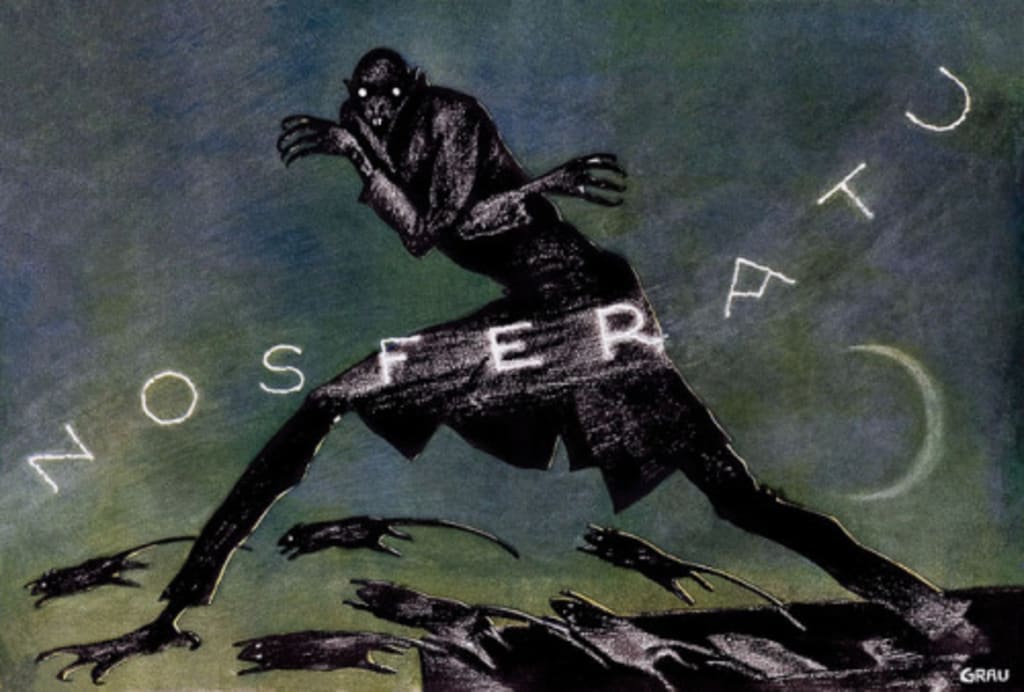
(Note: This article will contain analysis on the film "Nosferatu" (1922), and in order to get the best insight, it is recommended that you watch the entire film at least once.)
Possibly one of the first of its kind, Nosferatu is one of the great films of the German Expressionist Movement, and one of the world's most electric horror films. In my own opinion, it is a raw experience that is exemplified by its incredible musical score. The themes invite us to study more than simply colour scheme—seeing as it's in black and white that would be near-impossible. But instead, it invites us to have a look at the atmosphere and design, the way in which it is given to us and how we receive it. Let's have a look at the themes we will be covering then:
- Darkness
- Normality vs. Abnormality
- Setting
Let's get on with the analysis of the film then:
Darkness
Darkness is so important in horror, not only for the fact that it can add atmosphere, but it can also imply various movements and moments that may be important to the story. In Nosferatu, there are many instances in which this happens, but some are more famous than others.
Let's take a look at the frame:
Frame
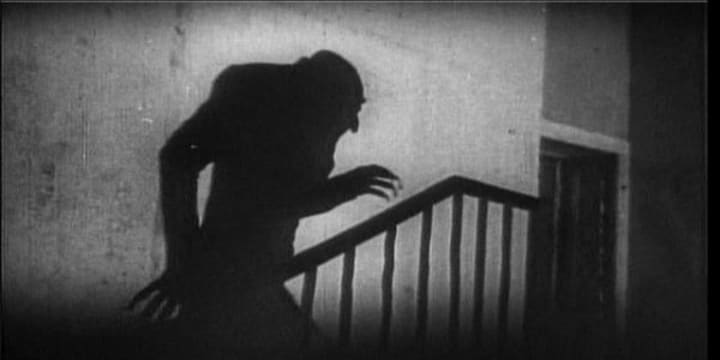
If we look at the frame the first thing we notice is the shadowing. This shadowing must mean that there is a focused light source and that the rest of the scenery is dark. This is highly effective for creating the dark atmosphere by making the focused source of light look dark by the shadowing process.
If you wanted to use this in your own horror film, you would need to have a fair amount of movement and clarity to the scene. It would need to have been built up fairly early in the film and so, this scene would represent a darkness that also builds suspense and tension. This causes the horror effect required to scare the audience into silence.
Normality vs. Abnormality
This is a huge theme in horror, and was pretty much created by the German Expressionist Era. In the case of Nosferatu, it depends on the audience being able to recognise that the vampire is a different character than the others.
Let's have a look at how this works in the film:
Frame
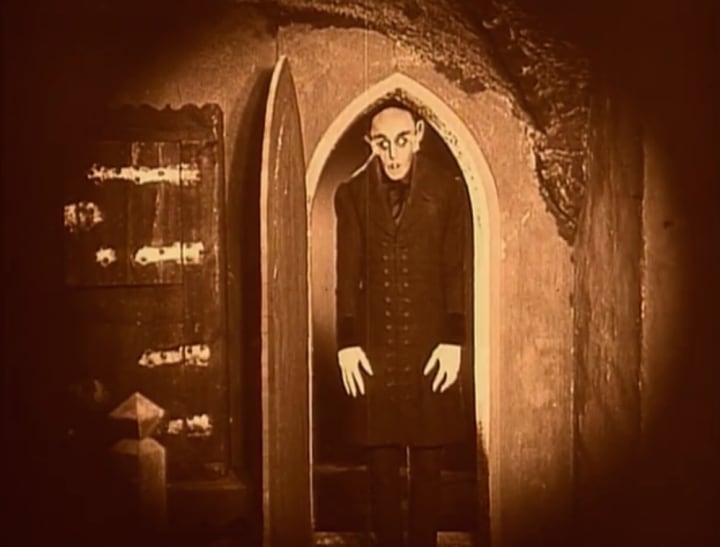
Now, you're probably thinking how this is abnormal. Let's first have a look at the most obvious thing about the abnormality is the size. The vampire is the same size as the door, and therefore, quite a bit taller than a normal character in the film. This is what makes him intimidating.
Let's now concentrate on the body of the vampire. The body is not only abnormally long, but the hands are also very white with the head being fairly long in comparison to a normal human being, too. Therefore, the abnormalities have quite a bit to do with the appearance of the vampire as it is this that scared the audience.
If you want to do this with your film, you probably want to use abnormalities that are difficult to recognise unless they are in very particular situations. For example: The way in which the vampire stands in the doorway shows us that the vampire is a lot larger than a normal person, presenting the abnormality to the audience and making it uncomfortable.
Setting
The setting for a horror film makes us "feel" the atmosphere the closer it is to us. In Nosferatu this is not only true, but it is also one of the first horror/German Expressionist films to do this. It's a very intricate process that has been copied by everything from The Exorcist to Insidious and The Conjuring, Child's Play, and even The Texas Chainsaw Massacre. This setting is what I call "urban terror," or in the scholarly case it is a "troubling location" (by which it means a location known by many people like a city and within it, there is a "troubling" case that causes the terror). Let's have a look at how this works in the film then:
Frame

This is the opening scene to Nosferatu and, as we can see, it is an average Victorian-esque town. It is very important that we notice the church in the centre of the frame as it tells us about the beliefs and morals of the small town. Since it is a small town, it would be a fairly tight-knit community, and therefore, whatever happens next when it comes to the vampirism, we can assume the characters believe in it. This implicitly tells us the beliefs and ideas of the characters involved in the story. We don't actually see most of the town, but this opening scene and what we do see are very important for showing us things instead of simply telling us them.
If you would like to use this in your own film then you probably want to be careful as it is overused by many films. What you probably want to do is to look for different films and study how they have portrayed this as a homage to Nosferatu—the main meaning is the same as we see here and is just portrayed differently.
Conclusion
Everyone has heard of Nosferatu if they're interested in horror and well, there is a good amount of reason to watch it. If you would like to investigate further then you could analyse the following themes:
- Character Reactions to the Vampire
- Nighttime
- Madness
Good luck with your next project!
About the Creator
Annie Kapur
200K+ Reads on Vocal.
English Lecturer
🎓Literature & Writing (B.A)
🎓Film & Writing (M.A)
🎓Secondary English Education (PgDipEd) (QTS)
📍Birmingham, UK



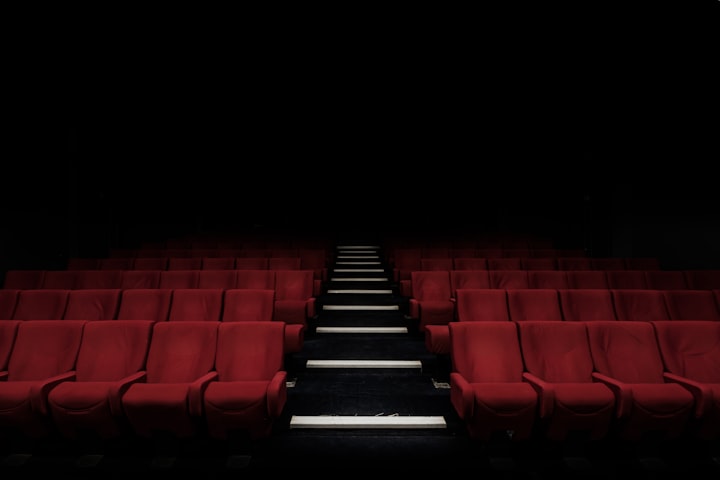
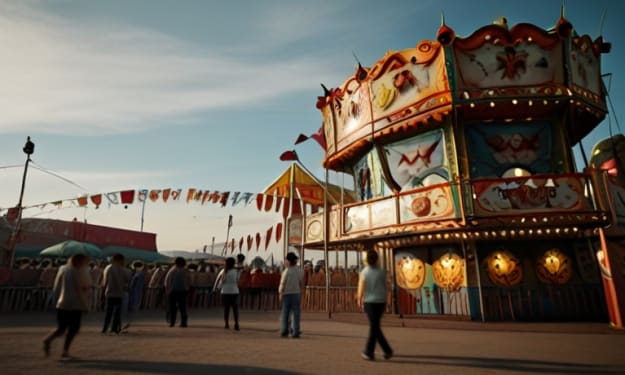

Comments
There are no comments for this story
Be the first to respond and start the conversation.